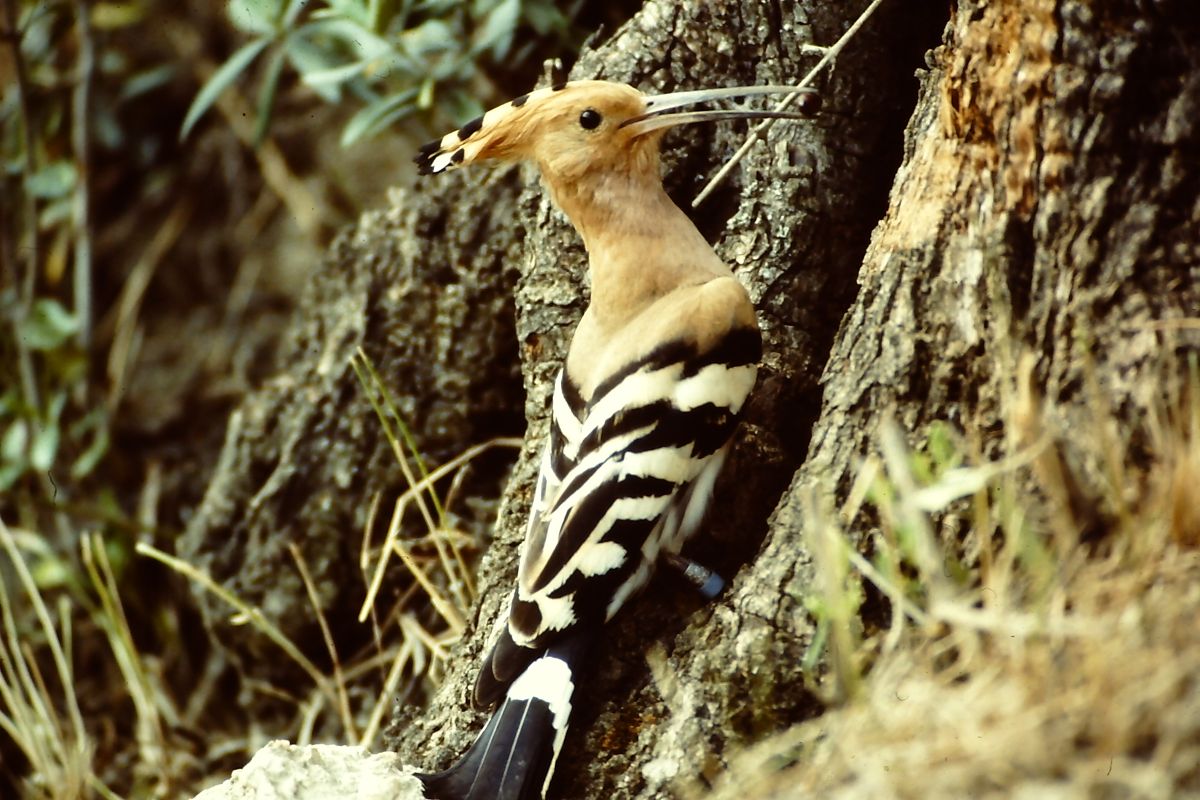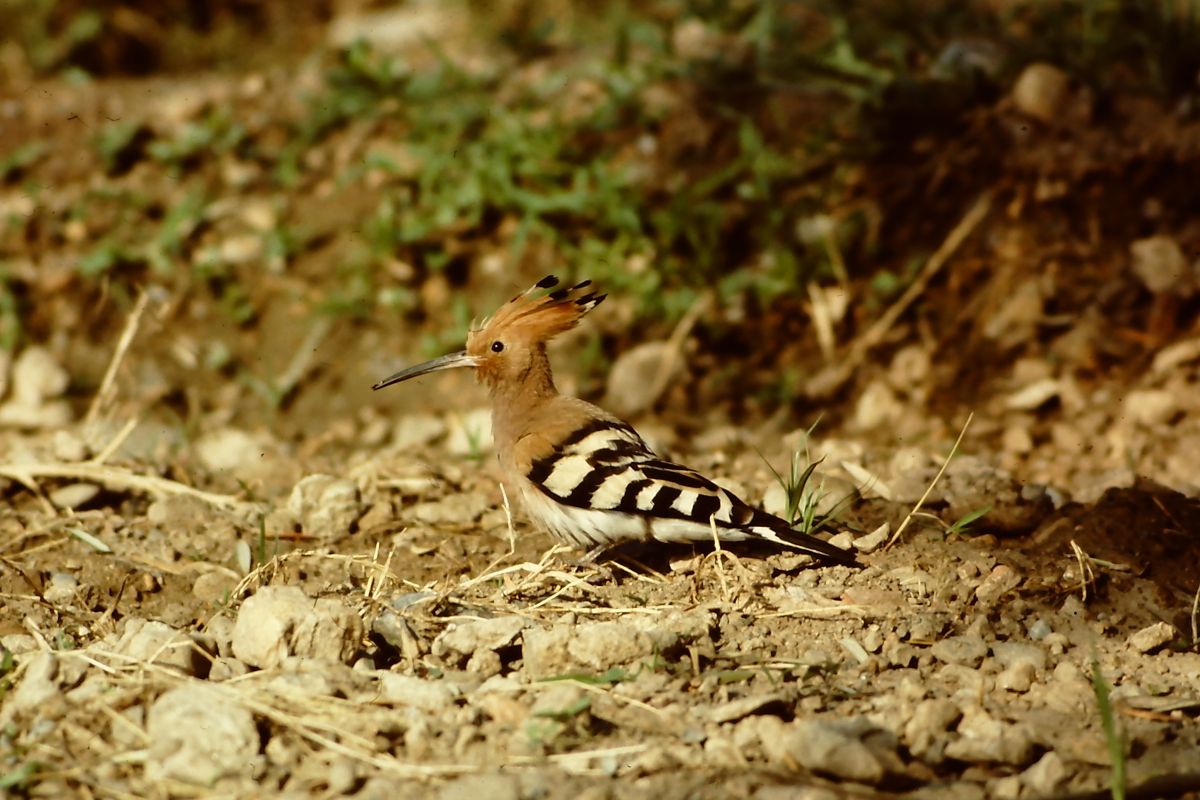Name
Upupa epops
Hoopoe
Framing
Phylum: Chordata
Subphylum: Vertebrata
Class: Aves
Order: Bucerotiformes
Genus: Upupa
Species: epops
Habitat
Open areas with scattered trees and nesting holes in trees, slopes, buildings or cairns. They do not usually occupy areas above 1000 metres altitude.
Feeding
Insectivore. Well equipped to catch hypogean or sublapidic insects, but generally consumes small ground animals, including small vertebrates. Forages by probing the ground with its bill, as a wader would.
Distribution
Widely distributed in the Palaearctic, Ethiopic, Malagasy (where it is suggested to be a distinct species) and Eastern regions, although in Europe it is absent from the Nordic countries. In the Palaearctic it is a summer species, except in the south of the Iberian Peninsula and North Africa, where part of the breeding population remains in winter. African and South Asian populations are sedentary and in winter they mix with wintering birds from the north.
Conservation status
Not threatened. It is included in the List of Wild Species under Special Protection Regime.
Additional information
Free. Solitary. Medium-sized bird (25-29 cm) unmistakable by the contrasting black and white bands of its flight feathers, long orange folding crest with black spots that opens in moments of excitement, broad rounded wings and butterfly flight. The bill is black, long and curved downwards and the legs are short. It spends a lot of time on the ground probing the substrate with its bill in search of prey. During the nesting season, females and chicks produce a foul-smelling substance in their uropygial gland that helps them defend themselves from disease and probably also from predators.
Additional information
Bibliography
- Arco-González, L. (2013). Selección y reparto de alimento en nidos de abubilla (Upupa epops). Trabajo de fin de Máster. Universidad de Granada. Granada.
- Arlettaz, R., Fournier, J. & Zbinden, N. (2000). Evolution démographique (1979-1998) d'une population témoin de Huppe fasciée Upupa epops en Valais et stratégie de conservation ciblée. Nos Oiseaux, 47, 19-27.
- Arlettaz, R., Schaad, M., Reichlin, T. S. & Schaub, M. (2010). Impact of weather and climate variation on Hoopoe reproductive ecology and population growth. Journal of Ornithology, 151, 889-899.
- BirdLife International (2012). Upupa epops. En: IUCN Red List of Threatened Species. Version 2013.2.
- Botsch, Y., Arlettaz, R. & Schaub, M. (2012). Breeding dispersal of eurasian hoopoes (Upupa epops) within and between years in relation to reproductive success, sex, and age. The Auk, 129, 283-295.
- Carrascal, L. M., Weykan, S., Palomino, D., Lobo, J. M. & Díaz, L. (2006). Atlas virtual de las aves terrestres de España.http://www.lmcarrascal.eu/atlasaves.html
- Cramp, S.(1985). Handbook of the Birds of Europe the Middle East and North Africa. The Birds of the Western Palearctic. Volume IV. Terns to Woodpeckers. Oxford University Press, Oxford.
- Díaz, M., Asensio, B. & Tellería, J. L.(1996). Aves Ibéricas I. No paseriformes. J. M. Reyero, Madrid.
- Doña-Reguera, J. (2013). Señales de coloración en abubilla (Upupa epops). Master Thesis. Universidad de Granada. Granada.
- Heath, M., Borggreve, C. & Peet, N.(2000). European bird populations: estimates and trends. BirdLife International, Cambridge.
- Martín-Vivaldi, M.(1997). Biología de la reproducción y función del canto en la abubilla (Upupa epops). Tesis Doctoral, Universidad de Granada. Granada.
- Martín-Vivaldi, M., Martínez, J. G., Palomino, J. J. & Soler, M. (2002). Extrapair paternity in the hoopoe (Upupa epops): an exploration of the influence of interactions between breeding pairs, non-pair males and strophe length. Ibis, 144, 236-247.
- Martín-Vivaldi, M., Palomino, J. J. & Soler, M. (1998). Song structure in the hoopoe (Upupa epops) - Strophe length reflects male condition. Journal für Ornithologie, 139, 287-296.
- Martín-Vivaldi, M., Palomino & J. J., Soler, M. (1999). Function of song in the hoopoe (Upupa epops). Bird Study, 46, 104-111.
- Martín-Vivaldi, M., Palomino, J. J. & Soler, M. (2000). Attraction of hoopoe (Upupa epops) females and males by mean of song playback. Influence of strophe length. Journal of Avian Biology, 31, 351-359.
- Martín-Vivaldi, M., Palomino, J. J. & Soler, M. (2004). Strophe-lenght in spontaneous songs predicts male response to playback in the hoopoe Upupa epops. Ethology, 110, 351-362.
- Martín-Vivaldi, M., Palomino, J. J., Soler, M. & Martínez, J. G. (1999). Song strophe-length and reproductive success in the hoopoe (Upupa epops). Ibis, 141, 670-679.
- Soler, J. J., Martín-Vivaldi, M., Peralta-Sánchez, J. M., Arco, L. & Juárez-García-Pelayo, N. (2014). Hoopoes color their eggs with antimicrobial uropygial secretions. Naturwissenschaften, 101 (9), 697-705.



